The ongoing pandemic has everyone contemplating their mask experiences now more than ever. Until the past few months, masks were associated with dust allergies, health professions and style statements, but now they are a necessity to fight an infectious virus.The current N95 and surgical masks are uncomfortable to wear for a long time and low in supply, moreover between healthcare professionals and the general public, the former requires it more.
In this time of uncertainty and the dire need for masks, NESFAS (North East Slow Food & Agrobiodiversity Society) livelihood initiatives team worked with the community of Khweng village in Ri Bhoi district and have come up with an ingenious creation, the Eri Silk Masks.
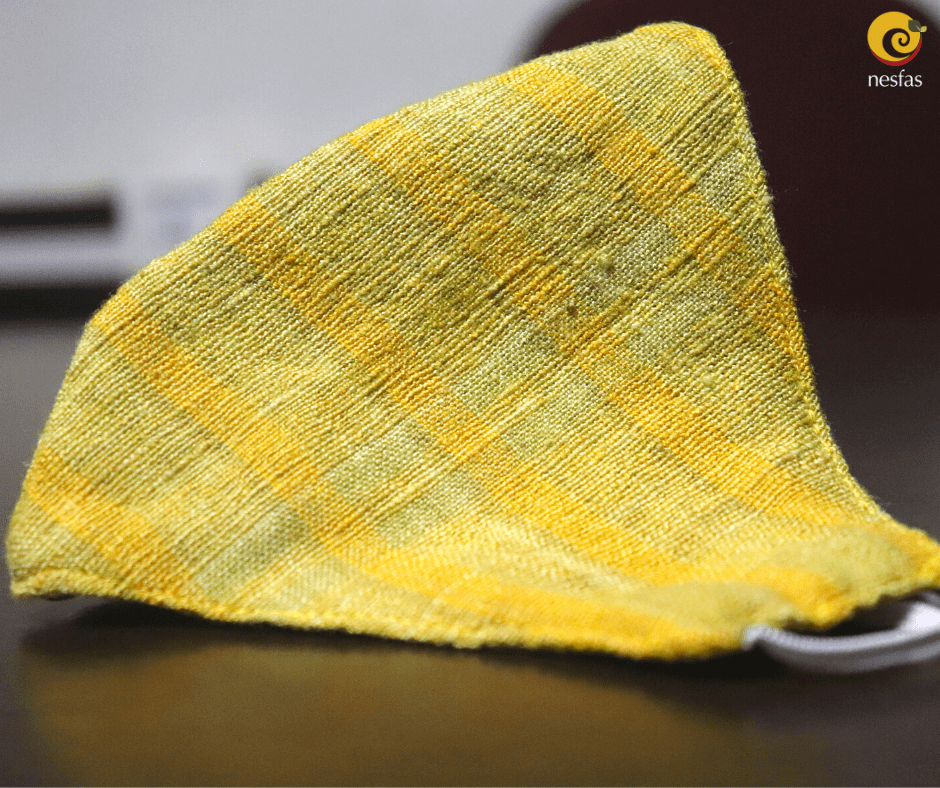
What is the Eri Silk Mask?
Eri Silk is one of the purest forms of silk, a material outcome of processing the cocoons left behind after the metamorphosis of Eri worms into moths. One of the major USP’s of Eri Silk is its humane, cruelty-free production process which is also the reason it’s called Ahimsa or Non-violence silk. The word ‘Eri’ gets its derivation from ‘erranda’ which means castor in Assamese, referencing it to leaves of the castor oil plant feed to the worms. The Eri Silk’s creation process is eco-friendly, sustainable, renewable and is a good example of a circular economy model.Not only are the raw materials locally sourced but the silk uses natural dyes from roots and vegetables for when it needs colour. The textile is often in demand for its durable, crinkle-free and thermal adaptation (warm in a cold climate and cool in a warm climate) properties.
The weavers and producers have realised that their traditional Eri Silk has a great potential to be more than just a generic textile, stepping it up as masks. Especially in the current COVID-19 scenario, the masks are the need of the hour.
The Production of Eri Silk Masks
The production starts with the weavers and their families, who carefully design and stitch the masks. The mask’s objective is to filter out air particulates, therefore, a three-layer construction. The outer layer is Eri Silk, the middle is cotton, and georgette is the inner layer; this helps the masks be breathable and anti-irritant.
“Eri silk masks are extremely beneficial for people’s health because it’s organic. It’s lightweight therefore very convenient for wearing. I feel extremely proud that Eri silk is used for making these masks since it is our traditional fabric. In terms of the market it has greatly benefitted us especially during this pandemic”, said Mrs Rikynti Syiem, a Eri Silk weaver and producer.
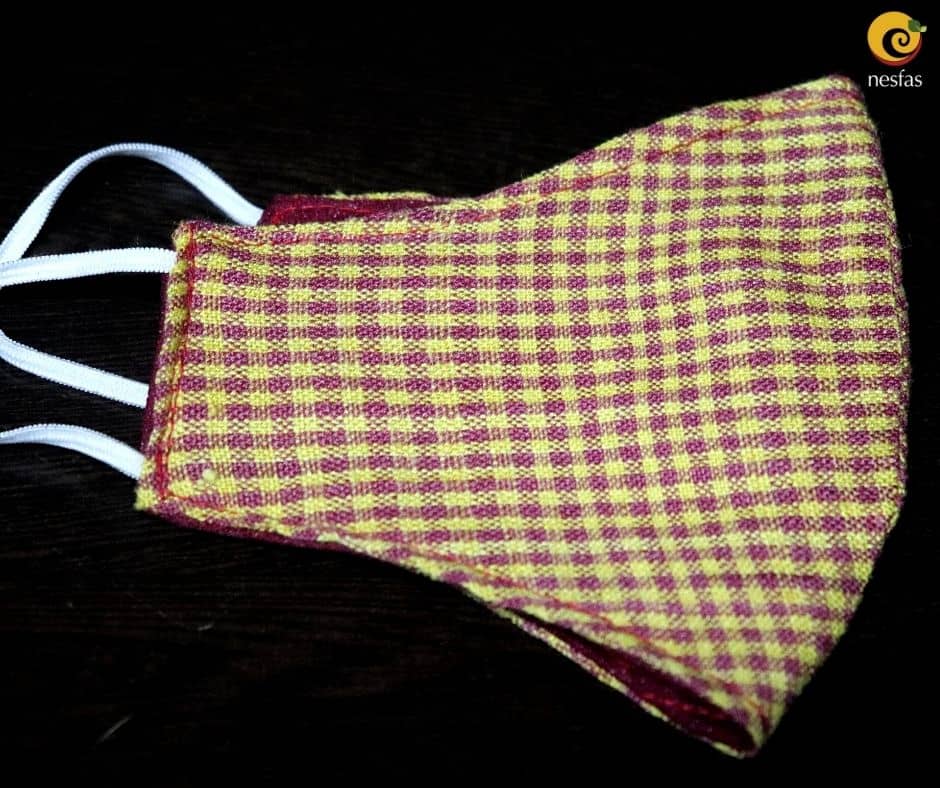
The Marketing of Eri Silk Masks
The current economy is going through a slump owing to the lockdown ,and the textile industry in Meghalaya isn’t doing great. The Eri Silk masks have presented the creators an opportunity to produce and promote their traditional textile with the help of technology. “We are currently marketing the masks through our social media platforms but limiting the distribution at the moment to the local domestic market. It’s because they are handmade by weavers who have a limited capacity” said, Janak Preet Singh, Senior Associate at NESFAS spearheading the livelihoods initiatives.
NESFAS after the initial rounds of sales plans to experiment with the masks so it can cater to diverse people, “We are planning to come up with more patterns and designs. At the moment we have only one standard size, so our target is to come up with different size ranges so that we can cater to a larger number of customers”, said Aurilia C. Tariang, a NESFAS Field coordinator.
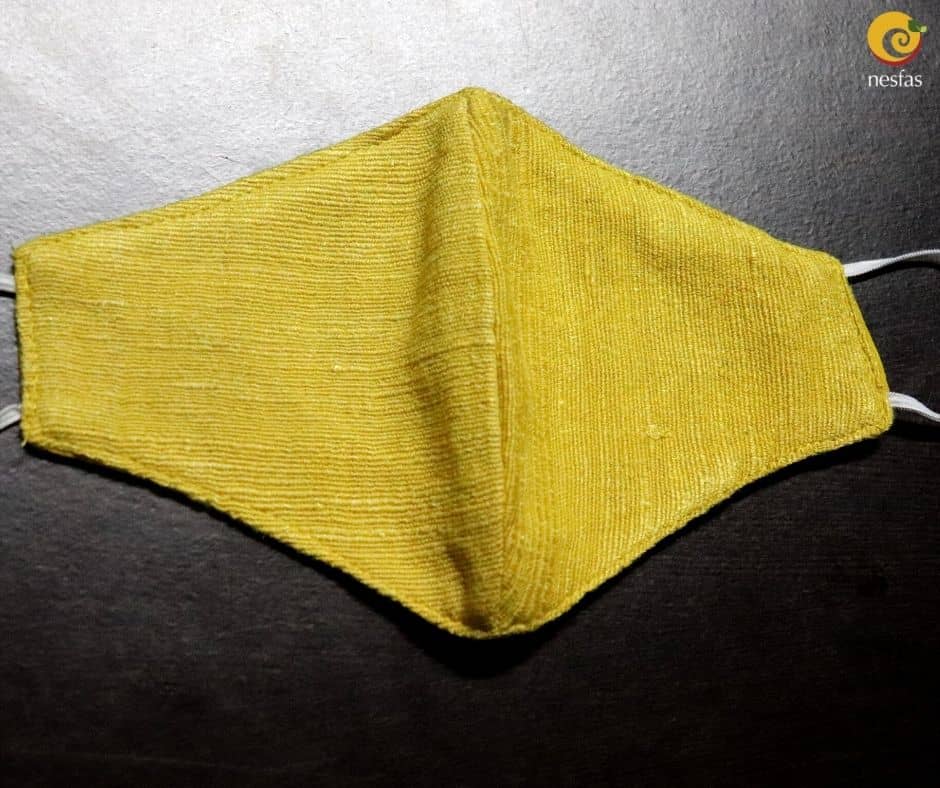
The Buyer Experience
The buyers who have been able to purchase the masks during the restrictive lockdown, have considered it to be a good alternative to ones already in the market. The Eri masks are odourless, reusable, anti-hypoallergenic, and, “they (Eri silk masks) are soft to the skin, breathable and comfortable. What’s even better is that they are made from Eri silk and it showcases our traditional textile”, said Ladeikynti Lyngdoh, an Eri mask buyer. The Eri-culture is a traditional craft of the people of Meghalaya, and they take utmost pride in it. It needs to be nurtured and improved upon so that its creators and makers are motivated to keep up their self-reliant practices in the current economy, especially as new challenges arise like COVID-19.

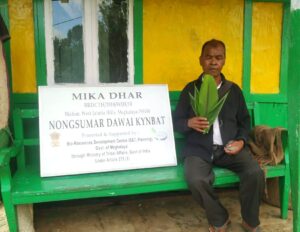
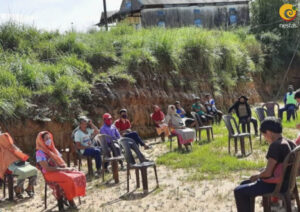
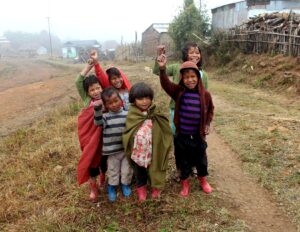
As a Textile designer, I would recommend incorporating a more functional design,maybe a pocket filter perhaps in which the consumer can insert a non woven material (medical mask) into the Eri silk mask for safety.
Overall, great job to the craft cluster!